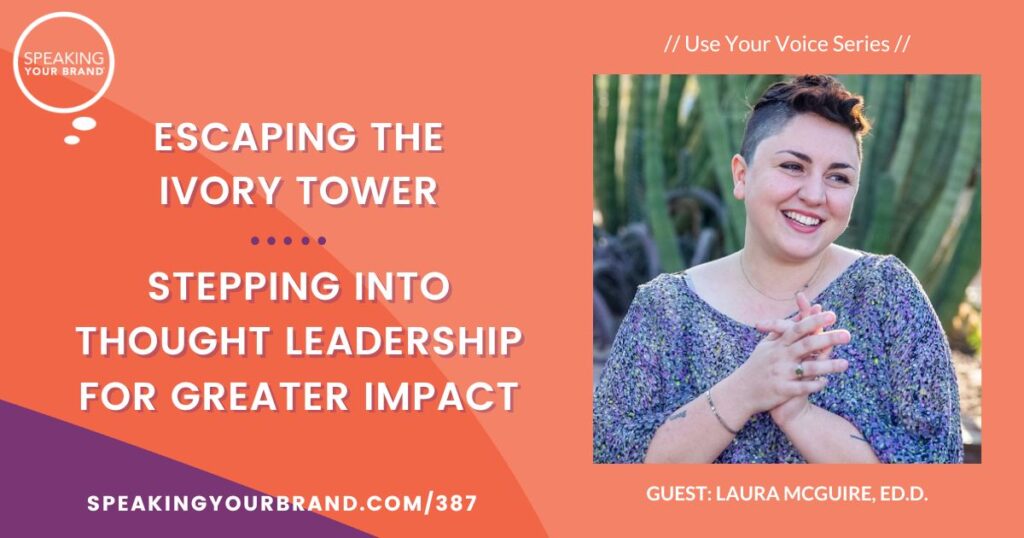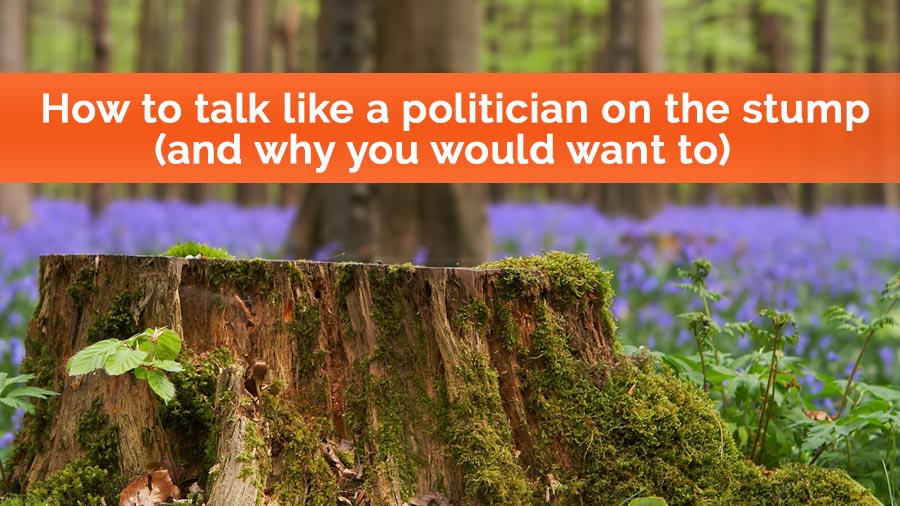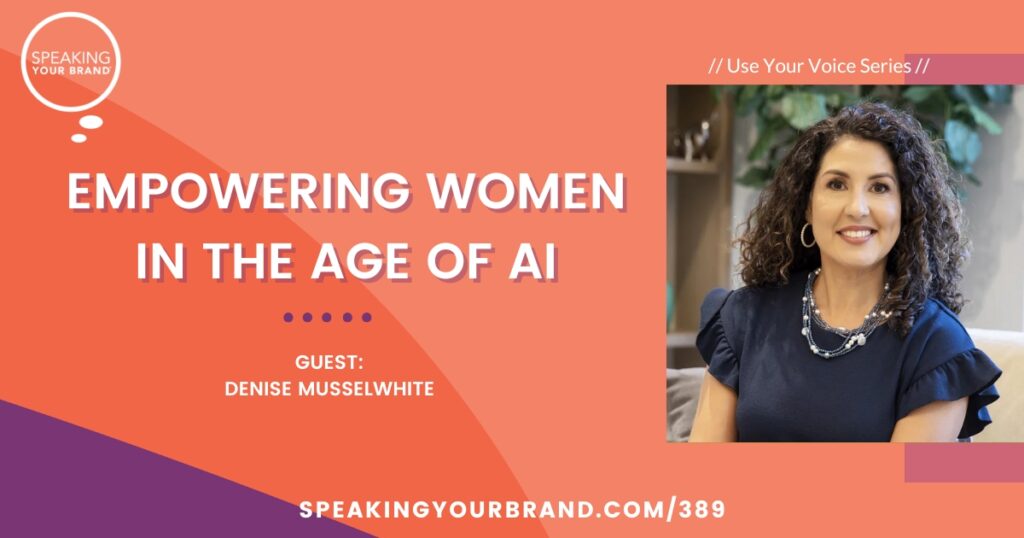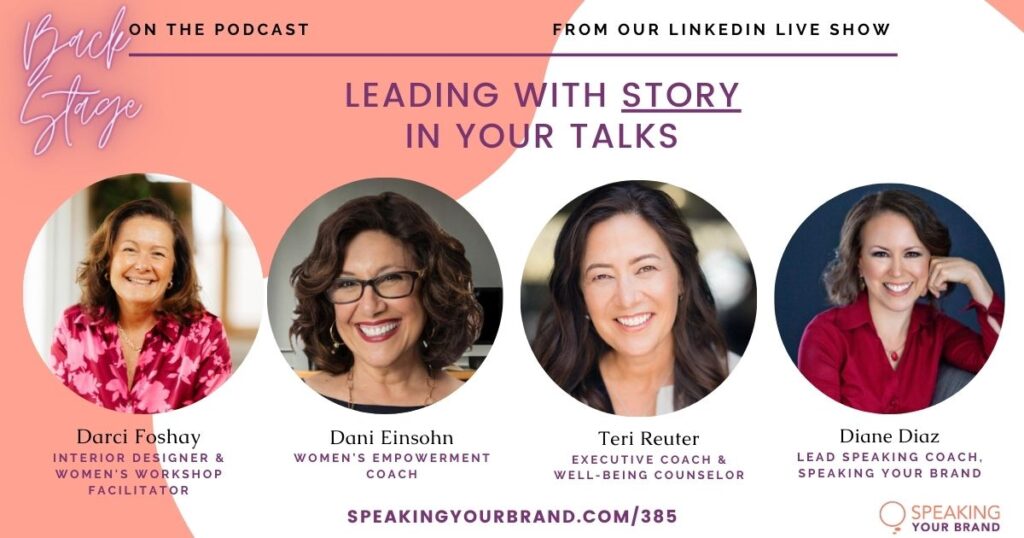Talking like a politician seems like the exact opposite of what you would want to do, I know.
But, hear me out. I’ve been working in politics, on and off, for over 12 years and have helped many candidates with their messaging and speeches. I’m also a political analyst on TV news, so I have to stay current and listen to a lot of speeches. 🙂
Politicians and candidates give what are called “stump speeches” for a reason – because they work. (In the early days, candidates would actually stand on tree stumps to give their speech, hence the term.)
Here’s how you can take the best of what candidates do in their stump speeches and use it for your own presentations:
1. Repetition.
The stump speech gets better every time because the candidate is doing it regularly.
You should be giving a version of your presentation at least once or twice a month – either in person or on a webinar. (Webinars are a great way to get comfortable with your content before doing your presentation IRL.)
2. Empathy.
Candidates tell their audience what they want to hear so they feel like the candidate understands them and their problems – and to get them excited about what’s possible.
Similarly, you should customize and frame your presentation for the audience based on their particular situation and needs.
When I give my presentation or workshop to brand new entrepreneurs, my emphasis and examples are different than when I talk to students or seasoned executives. Like a stump speech, the core of the presentation is the same, but I’ll tweak the edges so the content is relevant to the audience.
3. Stories.
Good speeches are based on stories, on shared values, on hope for a better future.
You’ll notice that candidates will share a story or two of their own, but they primarily tell stories about other people, particularly people whom the audience can relate to.
In your presentation, share your own story but also weave in some stories of clients or colleagues who had similar problems and, with your help, overcame them (give them hope); this also acts as social proof.
4. Story Arc.
Story arc is not the same thing as a story. A story is one example interspersed in your talk. Story arc is the overall flow of your presentation:
→ Begin by describing the shared problem your audience has: Are they having trouble with getting more leads and sales, getting fit, eating healthier, understanding their finances, setting up their website?
→ Go deeper and identify the feelings that are at the root of these issues: Are people feeling overwhelmed, unmotivated, unsupported, uncertain? Can you help them find clarity, motivation, support, community, time, hope, positive triggers?
→ Share how you too experienced those problems – you are one of them. You understand what they’re going through because you went through it too. You had the same concerns, fears, and doubts.
→ Now share the solution you found: Describe how you overcame the problem you were having. This will be related to what your business offers, but don’t make it sales-y.
After you’ve established the solution, you can talk about your background and experience, but keep relating it back to the audience and how you can help them: “Because I’ve been giving presentations for the past 15 years, I can help you use this method to organize your content and keep your audience interested and engaged.”
→ End with a call to action: tell the audience how they can do what you recommend on their own or by working with you. It’s important that the audience feels they received value from your presentation and learned something helpful that they can use even if they never interact with you again. But, of course, you also want to let them know how they can buy your product or service.
Now, aren’t you glad I’ve listened to all of those candidates’ speeches, so you didn’t have to?
Get More Posts Like This – Sign Up for My Weekly Email Newsletter with Stories, Strategies, and Recommendations
Worth Reading
Speaking of candidates, here’s a recent article in The Atlantic with an excellent analysis of our cultural constructions of masculinity and femininity and how (and why) we react to women in positions of leadership and power.
Worth Listening To
On a lighter note, I’m really enjoying the new “With Her” podcast with Hillary Clinton. Many voters complain that they don’t have a sense of what she’s like “as a real person”. This podcast does just that.
Upcoming Events
I’ll be moderating a panel of an impressive group of women in marketing at the American Marketing Association Orlando event “Leading Ladies Talk Brands + Business” on September 22. If you’re in the Central Florida area, I’d love to see you there! Details and early bird tickets here.
Get More Posts Like This – Sign Up for My Weekly Email Newsletter with Stories, Strategies, and Recommendations
Get Our Free Thought Leadership Workbook
You may also like...
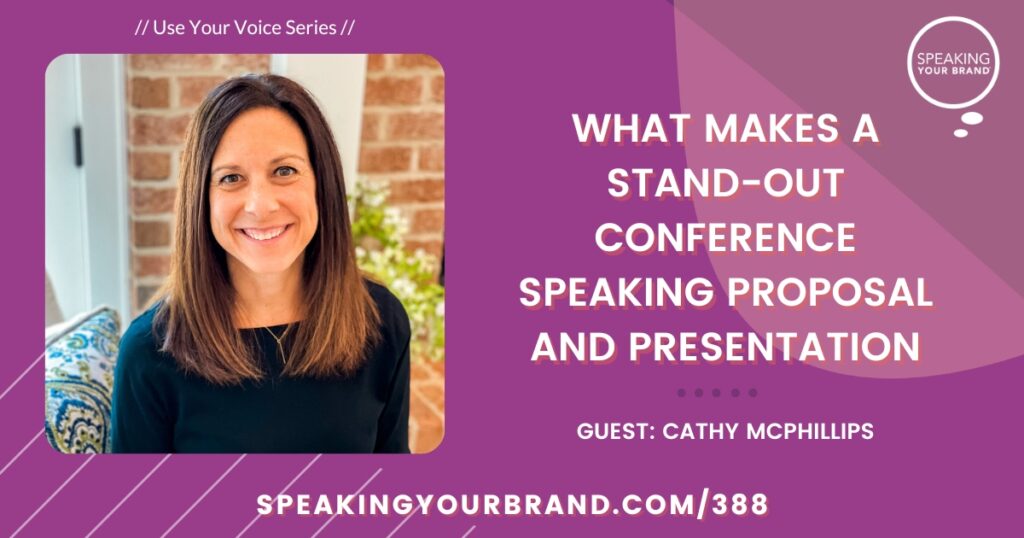
What Makes a Stand-Out Conference Speaking Proposal and Presentation with Cathy McPhillips: Podcast Ep. 388
